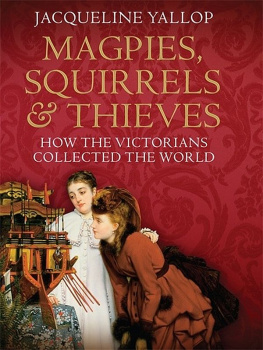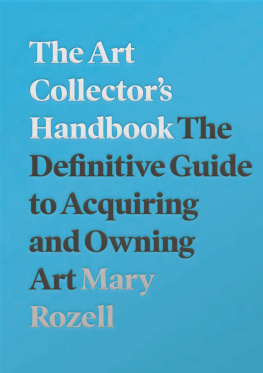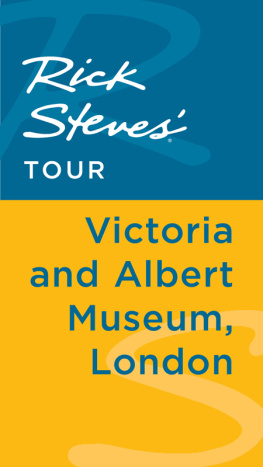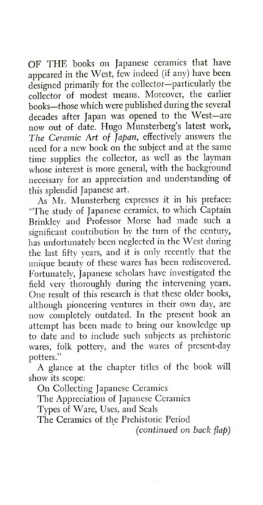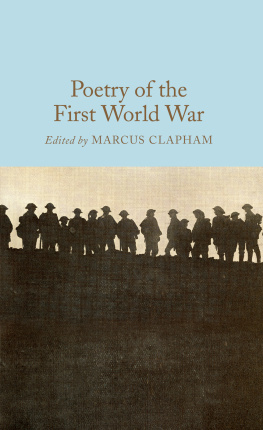MAGPIES, SQUIRRELS & THIEVES
MAGPIES, SQUIRRELS & THIEVES
HOW THE VICTORIANS COLLECTED THE WORLD
JACQUELINE YALLOP

First published in Great Britain in 2011 by Atlantic Books, an imprint of Atlantic Books Ltd.
Copyright 2011 by Jacqueline Yallop
The moral right of Jacqueline Yallop to be identified as the author of this work has been asserted by her in accordance with the Copyright, Designs and Patents Act of 1988.
All rights reserved. No part of this publication may be reproduced, stored in a retrieval system or transmitted in any form or by any means, electronic, mechanical, photocopying, recording or otherwise, without the prior permission of both the copyright owner and the above publisher of this book.
Every effort has been made to trace or contact all copyright holders. The publishers will be pleased to make good any omissions or rectify any mistakes brought to their attention at the earliest opportunity.
10 9 8 7 6 5 4 3 2 1
A CIP catalogue record for this book is available from the British Library.
ISBN: 978 1 84354 750 1
eBook ISBN: 978 0 85789 561 5
Printed in Great Britain
Atlantic Books
An imprint of Atlantic Books Ltd
Ormond House
2627 Boswell Street
London
WC1N 3JZ
www.atlantic-books.co.uk
Things were, of course, the sum of the world.
Henry James, The Spoils of Poynton, 1897
List of Illustrations
MAGPIES, SQUIRRELS & THIEVES
Preface

T oday we are accustomed to the mechanisms that allow collectors to build a collection: auctions and antique dealers, car-boot sales and internet trading sites. We expect to have public collections in town and city museums, even if we rarely visit them. The motivations that drive collectors have frequently been examined by psychologists and psychoanalysts, and this has given us some understanding of why collecting is such a popular activity and how it can become so obsessive. What I want to do with this book is to take a step back, to a period during the nineteenth century when many of the aspects of collecting which we now take for granted were being newly explored, when collectors were emerging into the public eye and when the hunt for objects was at its most inventive and eccentric. The thrills and perils of Victorian collecting will, in some respects, appear very familiar; it was the collectors of the nineteenth century who laid the foundations for later collectors and many of their networks remain. In other ways, however, we will discover outlooks and experiences very different from those which collectors might expect today. Victorian collecting had a character of its own, and it is this robust and intrepid spirit of adventure that I hope to convey.
There was no single archetypal Victorian collector: individual tastes meant that one collection was very different from another. Some collections were ordered, scholarly or scientific; others were quirky, highly personal narratives. Changes in fashions, attitudes and economic climate also influenced the objects people chose to collect. This book presents the stories of five collectors to give some sense of this diversity and of the ways in which collecting evolved through the nineteenth century. It also uses these individual stories to explore more general issues about collecting. What is a collection? What kind of cultural, social and political factors influence the life of a collection? What drives the collector? What is the relationship between the private collector and the public museum?
Each of my five collectors left lively archives, letters or journals which document their collecting and each has a fascinating story to tell. Between them, they turned their attention to all kinds of art and historical objects. John Charles Robinson was an influential curator at the South Kensington Museum, which would be renamed the Victoria and Albert Museum in 1899, becoming one of the most famous public collections in the world. He collected both for the museum and for himself, indulging a taste for significant, and often expensive, pieces of art and becoming a specialist in the Italian Renaissance. Lady Charlotte Schreiber, the widow of a steel magnate and an intrepid traveller, sought out china and playing cards, fans and glass in showrooms and junkshops across Europe. Murray Marks, a dealer as well as a collector, used his connections in Holland to exploit the fashion for blue-and-white ceramics and his friendship with the Pre-Raphaelites to create elaborate domestic interiors. Liverpool jeweller Joseph Mayer had a taste for Roman remains, Egyptian antiquities, coins, Anglo-Saxon archaeology and quirky objects from history. Stephen Wootton Bushell was sent to China as doctor to the British delegation and ended up becoming a pioneering expert on Chinese art.
The five individual stories offer a portrait of the collector, from the eccentric and obsessive to the scholarly and the professional. Together, they also show us how art-collecting changed during the Victorian period, moving away from the great pictures and sculpture that had fascinated the wealthy in the eighteenth century towards smaller, more varied decorative objects. Science and natural history collections, which were equally popular and active at this time, could not be covered within the scope of the book, but it is worth bearing in mind that this created yet another growing community of collectors, working alongside and occasionally overlapping with art collectors. For those whose tastes lay towards stuffed animals, geological specimens or mechanical instruments, there was a correspondingly influential and flourishing network of organizations, museums and collectors to feed their enthusiasm.
None of my five collectors is well known. Even John Charles Robinson has been little studied; in comparison to his colleague at the South Kensington Museum, Henry Cole, his work has been overlooked. Only some of the objects from their collections were important and valuable; some were just as much a demonstration of individual taste or little more than a frivolous purchase. None of the collections survives intact to be seen now. But each one was significant in its own time; some were even famed. And, taken together, these five histories give an insight into a Victorian phenomenon that went much further than just a handful of extraordinary lives, revealing a passion for collecting that helped shape how we see the nineteenth century and the legacy it has bequeathed to us today.
Catching the Collecting Bug
CHAPTER ONE
Exhibition Road, London, 1862

I t was a hot June day in 1862. South Kensington was bustle and dust and noise, as it had been for months. Horses, carriages and omnibuses moved slowly in the packed streets. On Exhibition Road, on a site that would, in twenty years time, become home to the terracotta columns of the Natural History Museum, two great glass domes shone in the sun. They formed the extravagant centrepiece of the London International Exhibition of Industry and Art, an enormous fair of artworks and manufactures from across the world in the tradition of the 1851 Great Exhibition. Visitors queued at the entrances, eager to see what was on show, crowds inside pushed their way through the glittering displays and Victorian London was, once again, in thrall to the excitement of spectacle
Sponsored by the Society for the Encouragement of Arts, Manufactures and Commerce, the new exhibition boasted 28,000 exhibitors from thirty-six countries. The specially erected building, designed by government engineer and architect Captain Francis Fowke, covered 23 acres of land, with two huge wings set aside for large-scale agricultural equipment and machinery, including a cotton mill and maritime engines, and a faade almost 1,200 feet long, of high arched windows, corner pavilions, columns and flags. At a cost of almost half a million pounds, the exhibition was intended to dazzle and impress even those who had visited the Crystal Palace extravaganza a decade earlier, and the two crystal domes of Fowkes design, each 260 feet high and 160 feet in diameter, were then the largest domes in the world, wider than (although not quite as high as) both St Pauls in London and St Peters in Rome.
Next page
